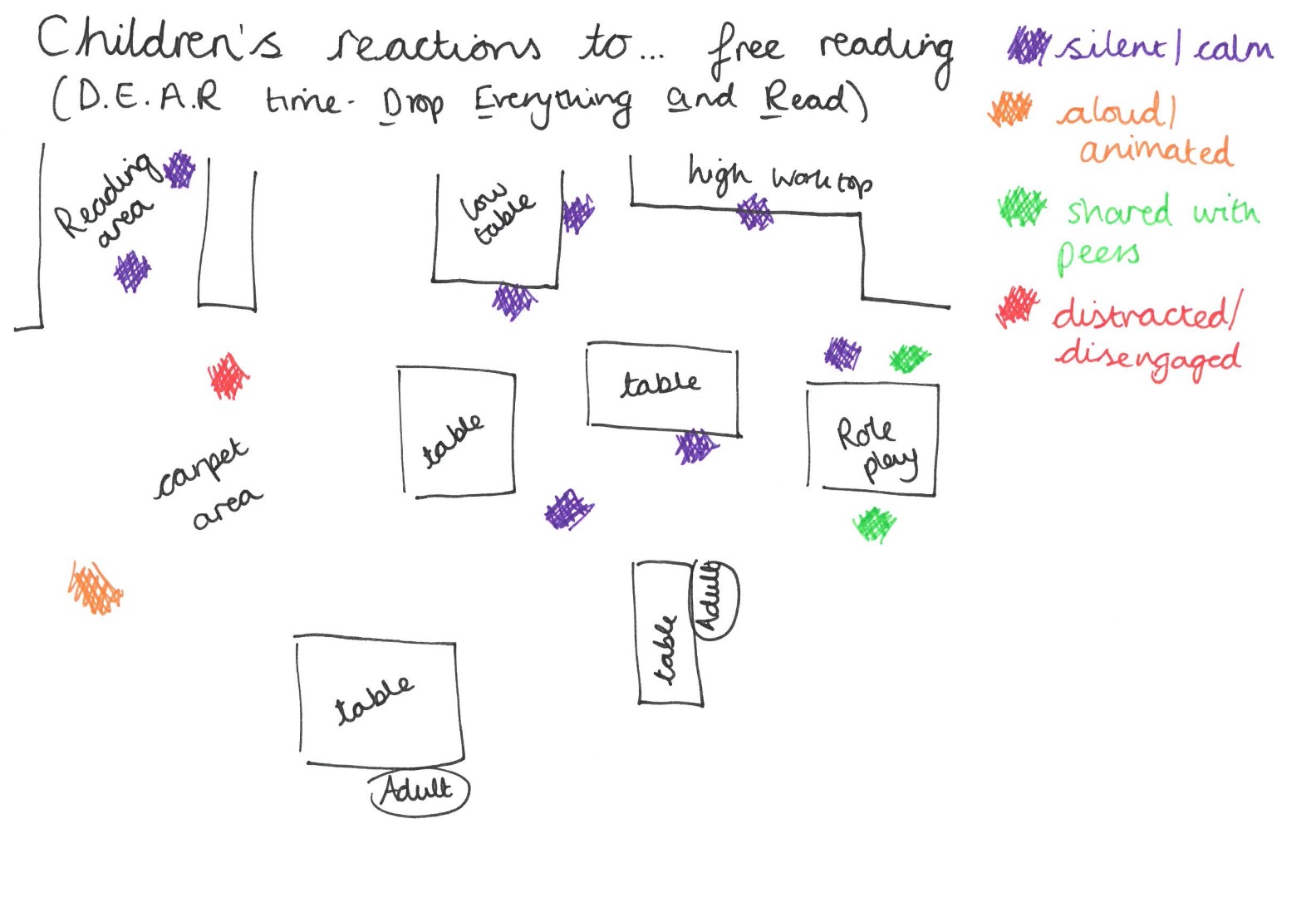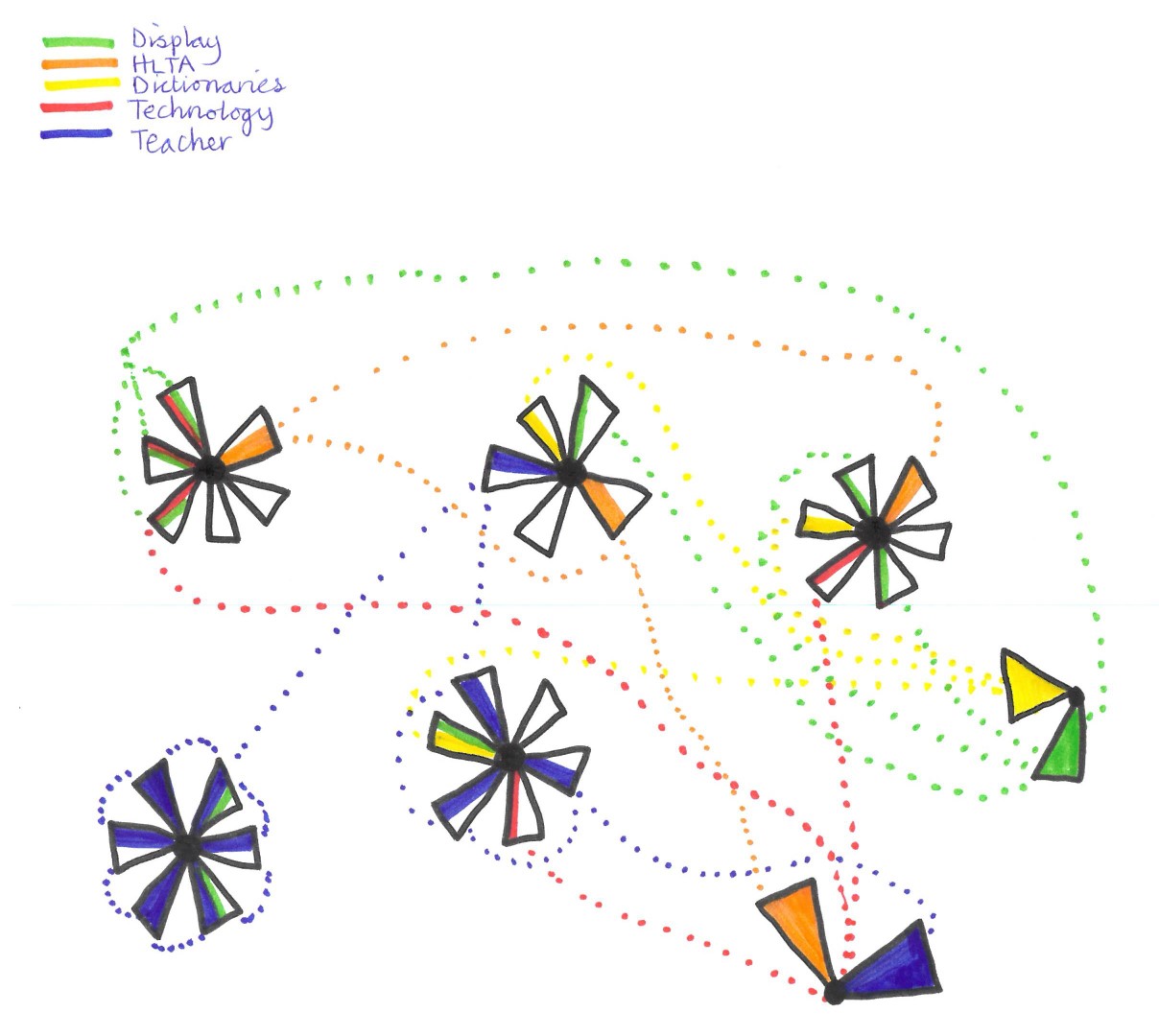MAPS
Children's reactions to free reading
"So I just wanted to look at children's reactions to the free reading that we're doing. So we say to them choose a book that you think you can read for five minutes, it's not normally that long but see if you can read for that long, we're not going to change them, it's got to be one you're interested in and they spend a bit of time doing that and encourage them and talking them through the choosing the book process and then we say you can go anywhere in the classroom, so you can be lying on the floor under a table, sat at a table, kneeling, anywhere. So I was looking at the distribution of children across the classroom and then also looking at their reactions to the free reading."
Where children go to for English support?
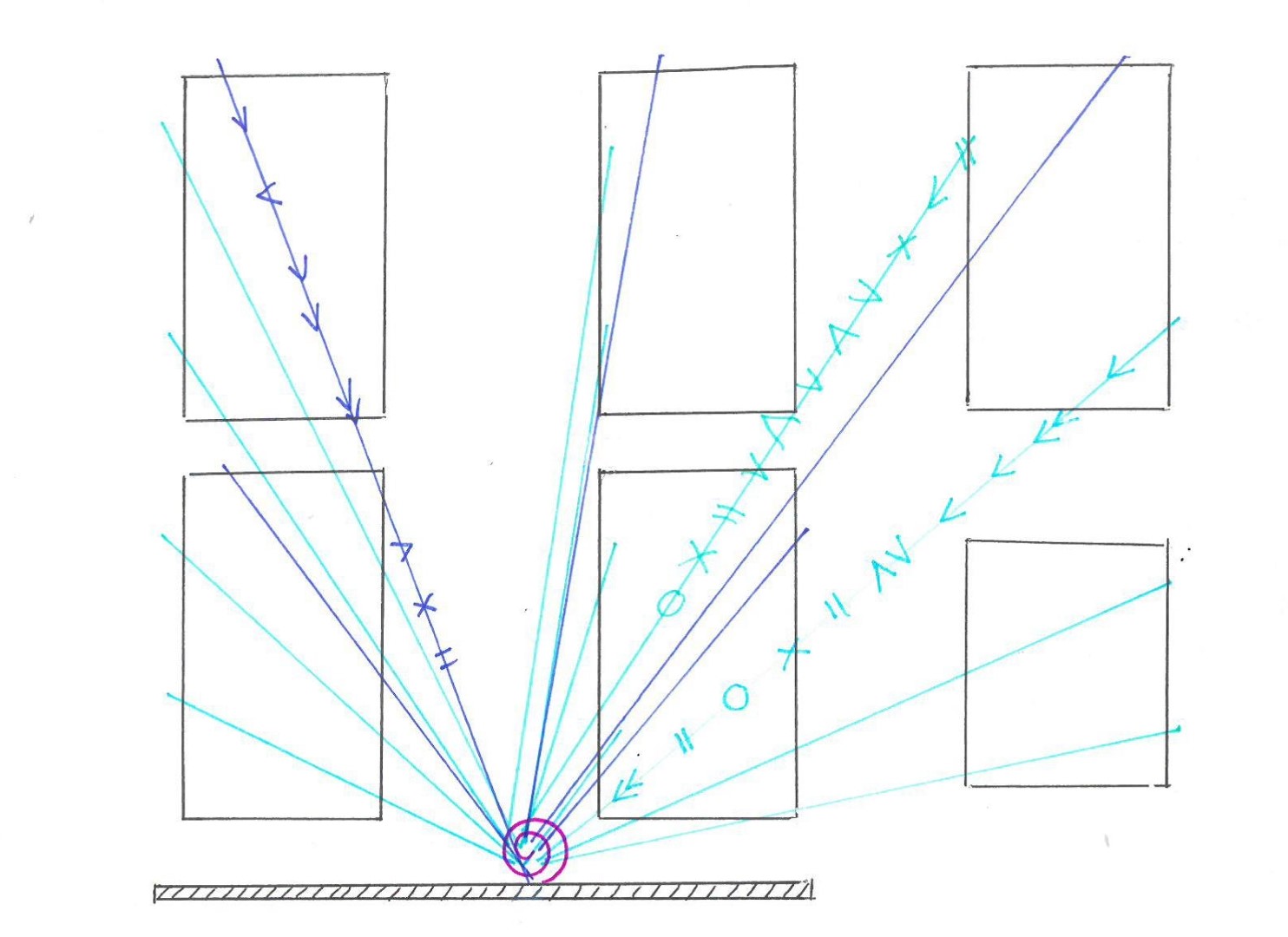
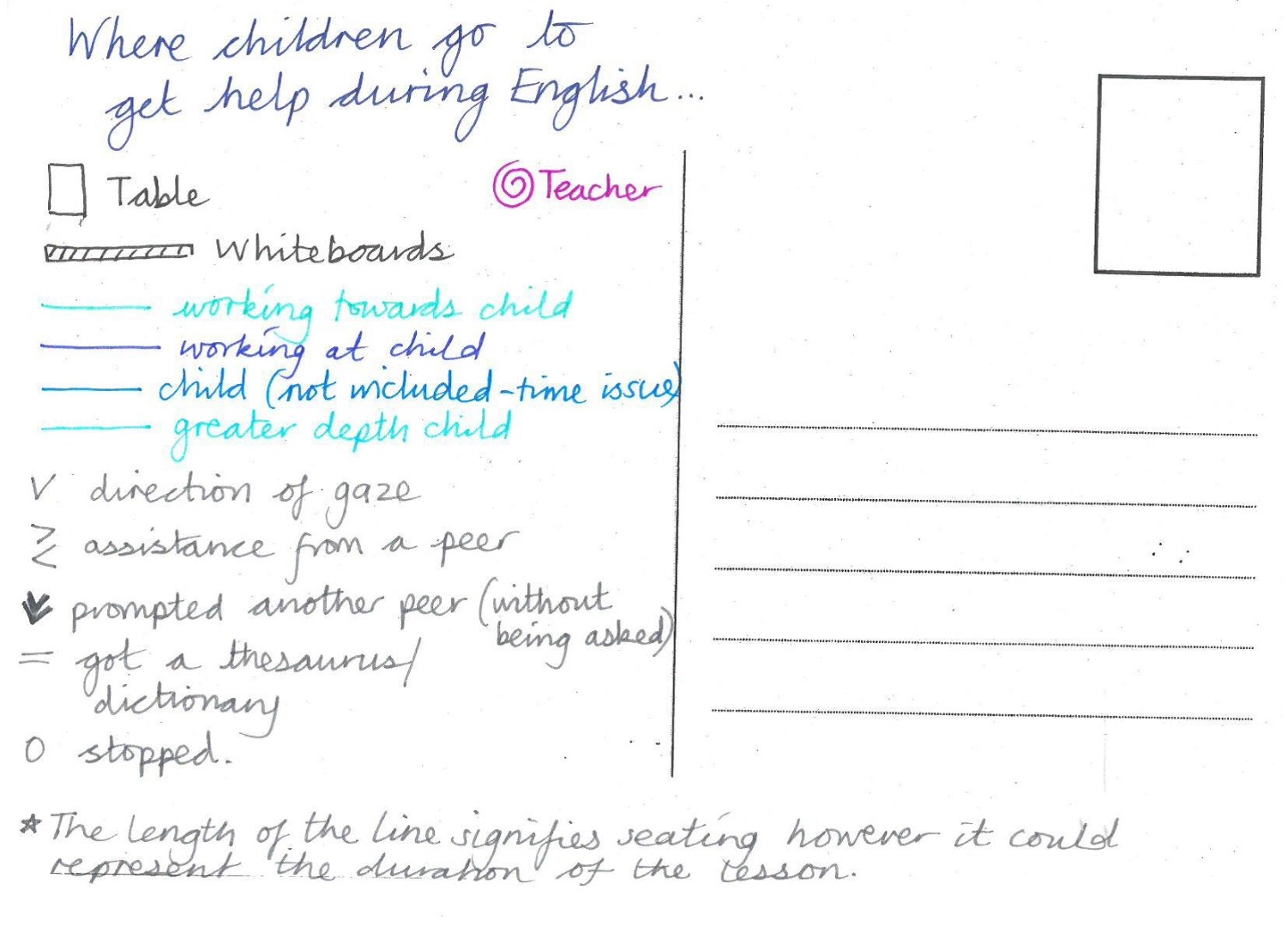
“I decided to look at where children go to for help in terms of their English support. I wanted to look at different children and their natural go to. I spoke to them first about where they go to for help with literacy and they said it's mainly me, so that's the significance of the swirl at the front, and the whiteboard because as I teach obviously there are resources on the whiteboard. So they all said that wherever they're sitting - these are the tables in the room - wherever they're sitting their direction of gaze tends to be towards the front and that's their first seek for any help, that's where they look towards any help.”
Children's reactions to their first free reading session in the library
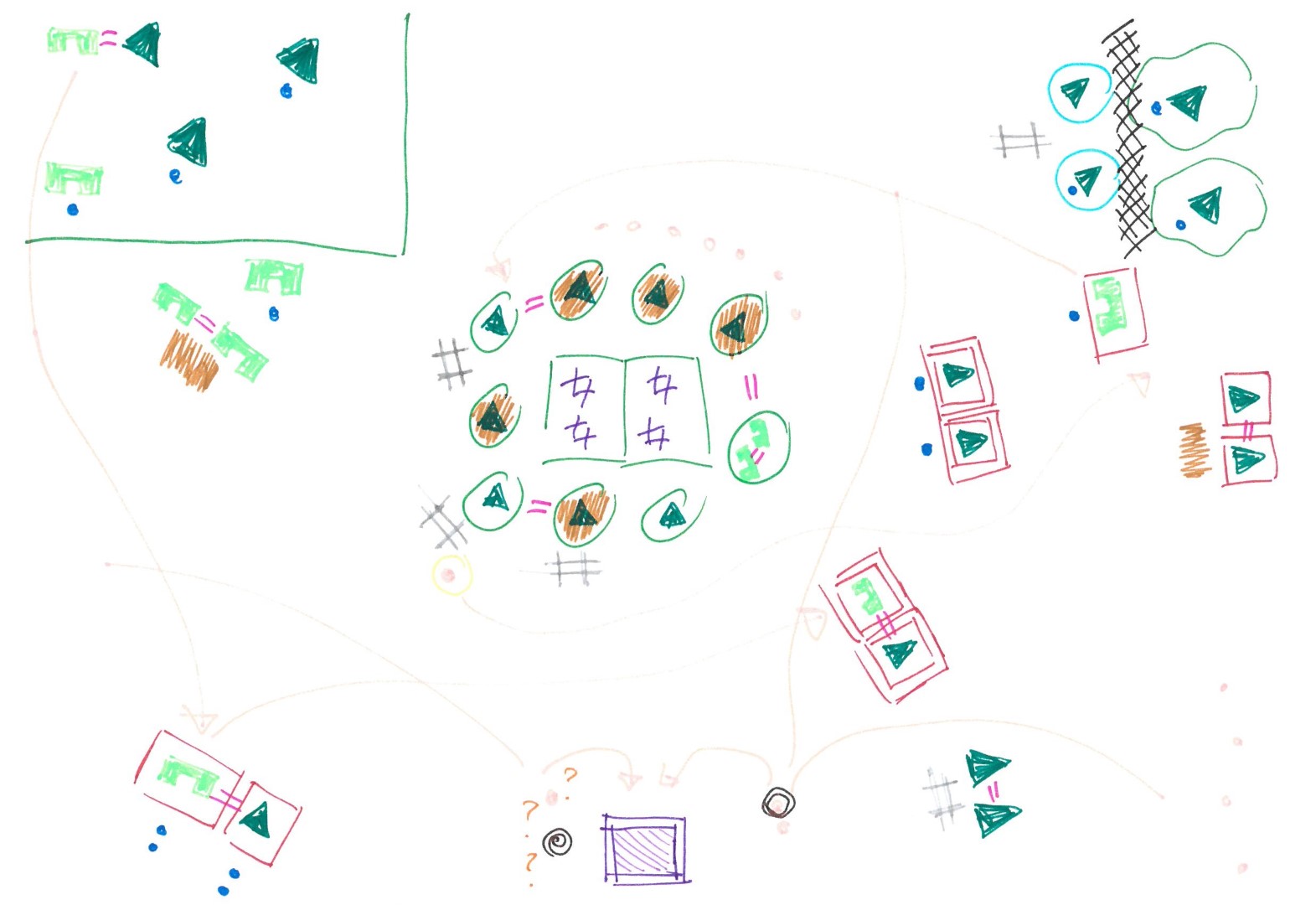
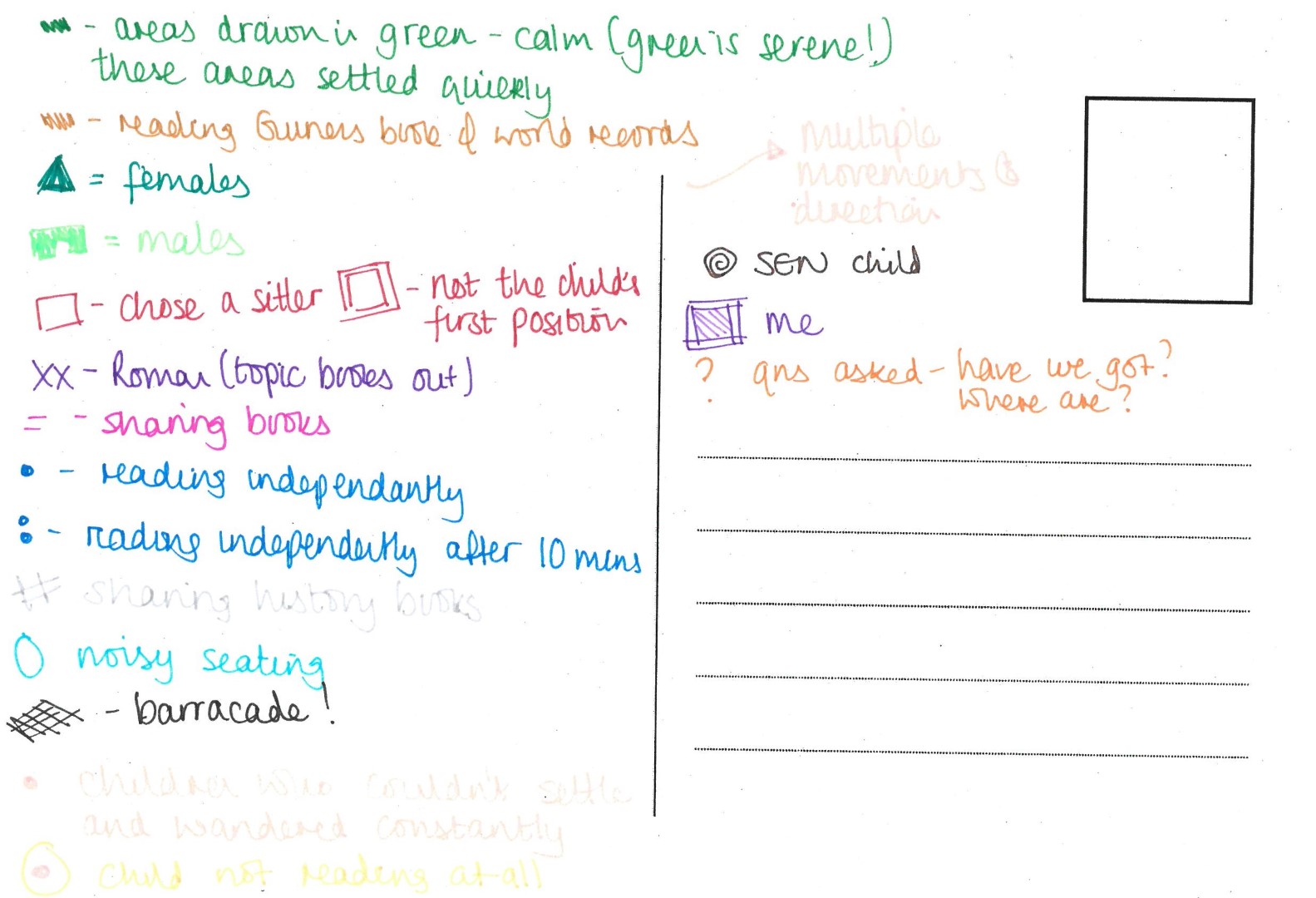
“I feel like mine's very much like some kind of rugby play. I don't quite know what was going on! I didn't want writing on there, I knew that, but I didn't know how to present it either … There was a choice of you could take your own book in if you want or you can get any book from the library and then, again, there was a few of our topic books on the table in the middle so that's kind of what the split is here. We've got a table there with some really comfy, gorgeous seating around it and then around the outside are the bookshelves all along there, and this bit's sort of a fiction area, so the rest of it's non-fiction. ”
Where does writing go, outside?
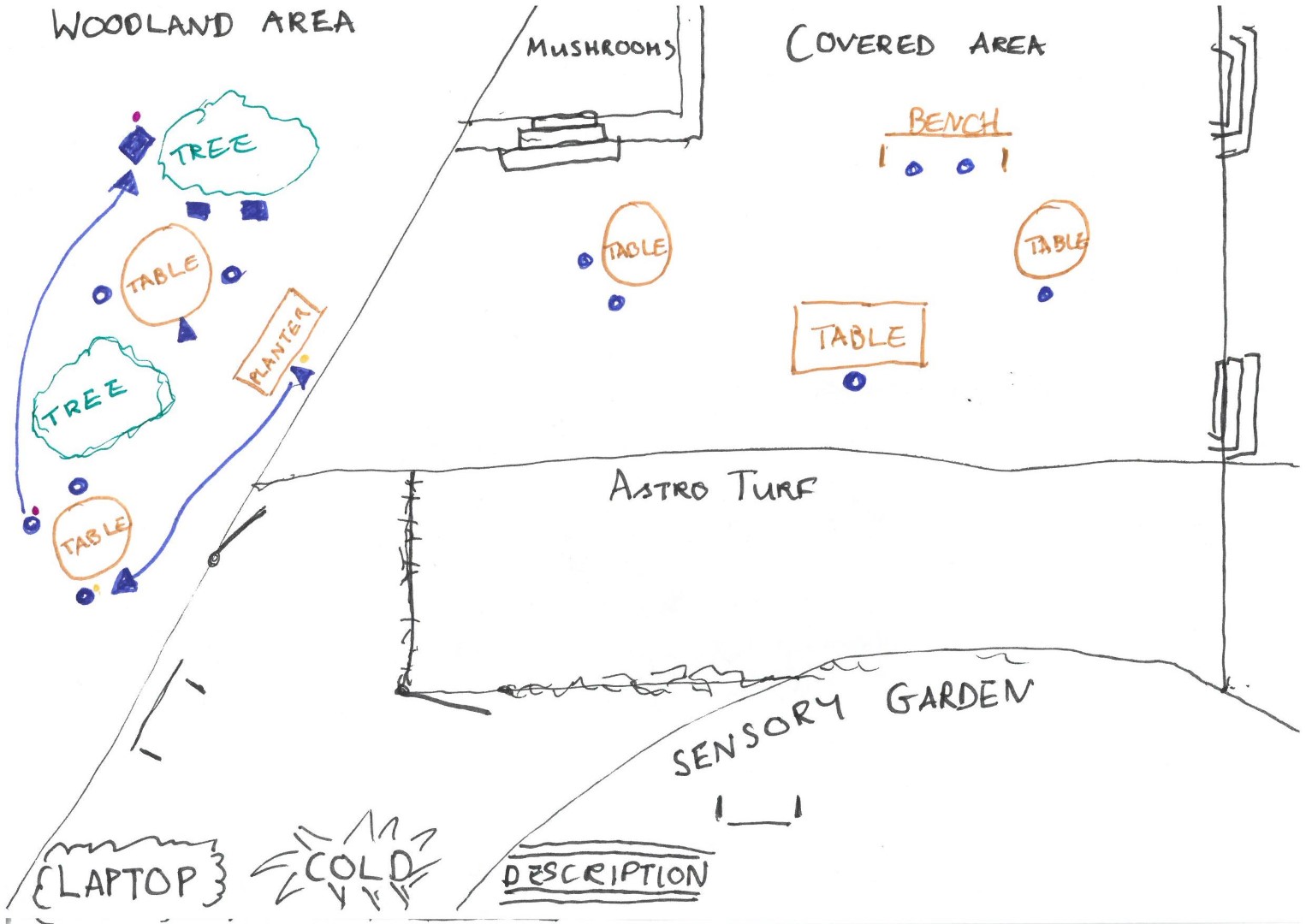
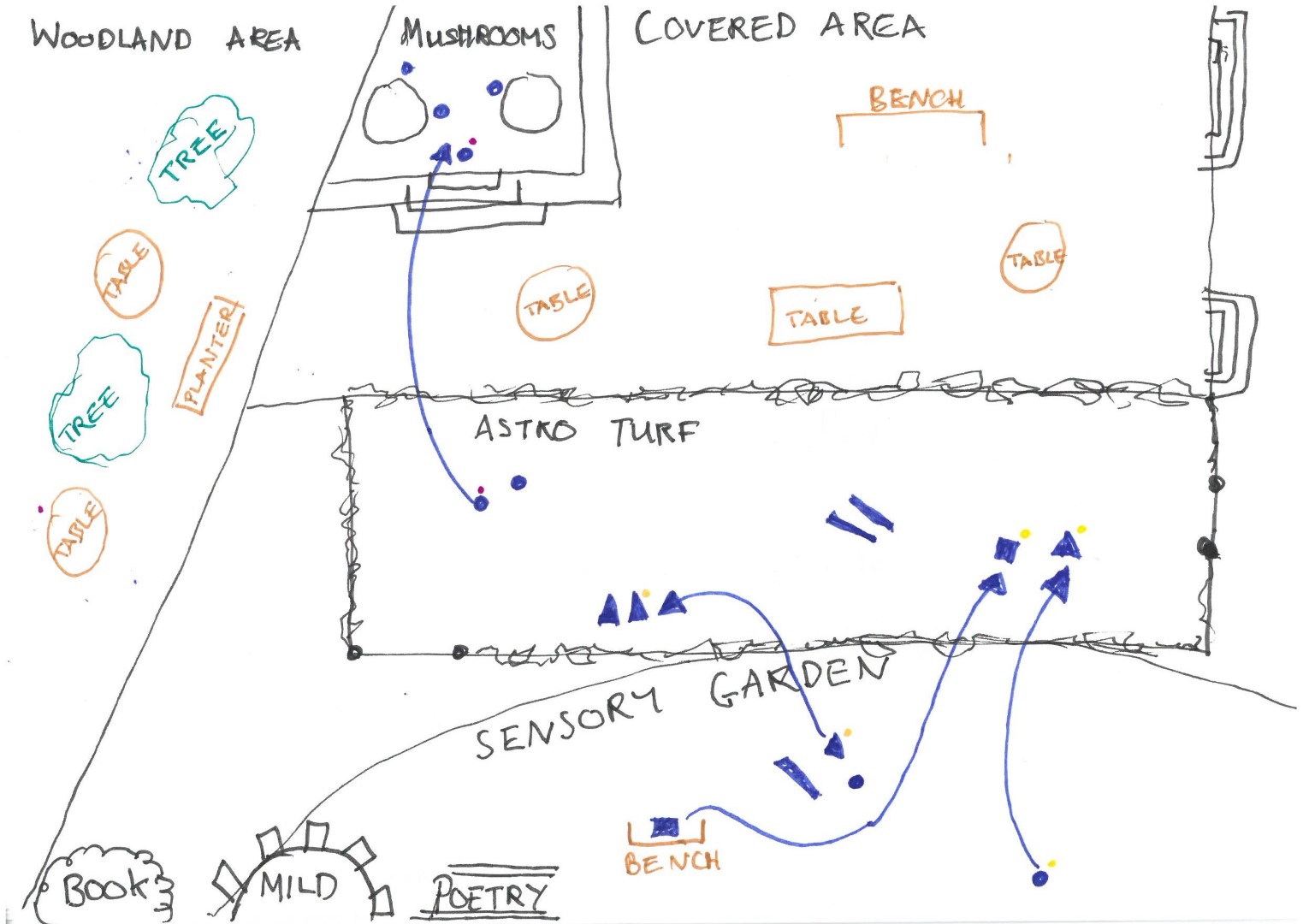
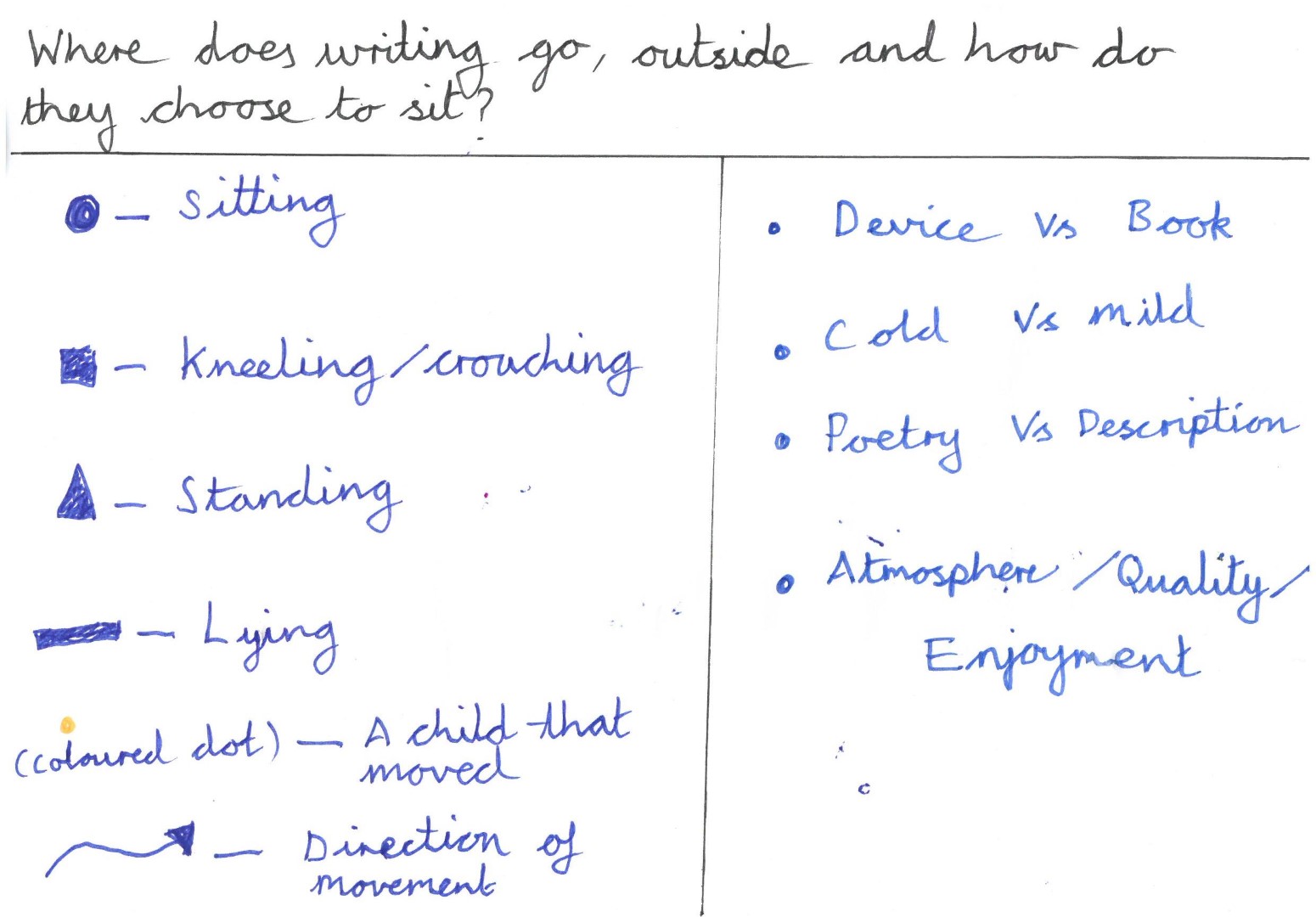
“It was just interesting to see how that ability to move a little bit around and sit however they chose and sit perhaps with whoever they wanted to sit with. Shackles of the classroom were kind of taken away a little bit. If anything I guess it just left me mainly with the question that we spend a lot of time making them sit at a desk in a specific way to write and how necessary that is. The other thing I found interesting was the laptop, the lesson that we did on Chrome Books, they did sit in a more traditional way, so they all sort of gravitated to a table and a chair and sat but then it was very cold so there's an element of maybe they just didn't want to sit on the floor because it was cold. It sort of just threw up a few questions and it interested me in that sense.”
Where do children go for support when writing independently?
“The floral representations are the tables of where the children sit and then the colours, I position myself near the front of the class so I'm the blue as the teacher and the children. I tried to track where they went and what they did but in terms of counting I think I might have failed a little bit there!
So the dots, I'd love to say that the dots are a representation of counting how many steps or how long it took them but it's not really. Yeah, it was interesting which children felt the need to come and check in with me, even though it was an independent piece of work, came and either spoke a sentence to me or said, 'can I use this word?' or 'Mrs Smith, does this word mean this?'
It was also interesting the children who chose multiple things as well. Some of the children came to me to check in with something and it could have been a question like 'can we use the displays?' and then toddle off to the displays to go and look.”
